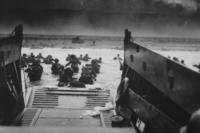Everything was on the line for victims of an attack on April 15, 2013, when two homemade bombs detonated 12 seconds apart at the finish line of the Boston Marathon. Three innocent people were immediately killed and hundreds more injured, immediately creating chaos, danger and a pressing life-and-death circumstance.
Dr. David King, a combat veteran in the U.S. Army Reserve, wasted no time packing wounds, applying pressure and putting on tourniquets as many victims risked bleeding to death following the explosion. King sprang into action, using his combat experience to keep victims alive.
Dr. King, a trauma surgeon and professor at Harvard Medical School, told Military.com that the challenge he faced in performing emergency surgery following marathon bombing was made far worse by a lack of tourniquets.
“I treated patients who had lost far more blood than they needed to. I operated on several people who had essentially lost almost their entire blood volume on the street,” King said.
King added that many bombing victims had been treated with improvised tourniquets, using shirts and belts, “which did not work. It creates paradoxical bleeding whereby when you tighten the tourniquet, the bleeding gets worse,” he explained.
“No one should die from a bleed to an extremity,” Col. Richard Bailey, Commander, 804th Medical Brigade, Army Reserve, and a colleague of Dr. King, told Military.com upon recalling the Boston bombing.
Bailey explained that King was trained to save Soldiers quickly from life-threatening gunshot or roadside bomb injuries. Accordingly, King knew there was not much time before many victims would bleed to death. “After the explosions he went into Mass General and did hours of surgery,” Bailey said.
“You can lose a lot of blood and still survive, but it is a time-sensitive thing,” said King.
In total, 16 victims wound up losing an extremity; some of them managed to avoid death due to King’s efforts.
Educating Civilians on Saving Lives
Instances such as this, which involve the application of war zone practices to civilian situations, have resonated in a special way with Army reservists who are now celebrating the Army Reserve’s 110th Anniversary.
When Bailey saw the news coverage of the bombing, he remembered training with King on an Army Reserve readiness exercise in Haiti. He knew the effort to “stop the bleed” was something potentially of great relevance to the Army Reserve.
This experience, wherein combat experience wound up saving civilian lives following a domestic terrorist attack, inspired an inspirational Army Reserve program called “Stop the Bleed.” Bailey and other reservists are now training numerous local entities on methods of quickly keeping attack victims alive through emergency medical procedures.
“We are bringing tourniquet training to the masses…FBI, police, fire fighters, teachers and anyone who could potentially need it. We have trained nurses lately,” Bailey said.
The goal of the program, which primarily operates in the New England area, is to make tourniquet application knowledge as ubiquitous as familiarity with CPR or the Heimlich maneuver.
“It is very easy to put on a tourniquet, but somebody needs to know how to use it,” Bailey added. “All of my soldiers are required to have this training and we are working to get them tourniquets to be included as part of their uniform, like dog tags and their IDs… We want the civilian world to have a purpose-made device and the motor skills to put it on.”















